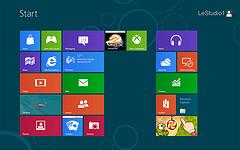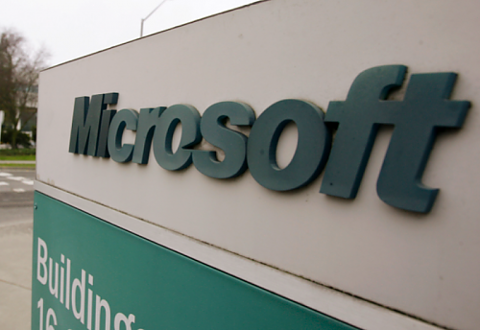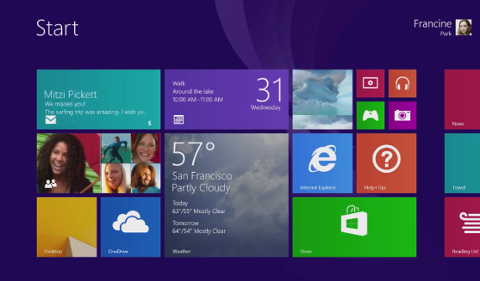 Dice News’s Dino Londis has made a strong case for why “IT Will Adopt Windows 8, Like It or Not.” The lingering question to ponder now is when. In the coming months, you and your IT team will have to make some decisions about software and hardware upgrades, and if your 2013 budget is getting locked down right now, you may feel pressure to figure out what you want to do about Windows 8 for your organization right away. But those of us who have dealt with Microsoft for decades know that slow and steady may ultimately win this race. We remember that when it comes to Microsoft, it usually takes three versions to get something right — DOS 3, Windows 3, Microsoft Word 3 — you get the idea. One huge complicating factor this time around is the omnipresent Bring Your Own Device (BYOD) trend. In the months and years to come, enterprises will have to evaluate not only the OS but also the new smartphones, ultrabooks and tablets that use it and that will inevitably find their way into the workplace in the hands of happy users. The good news that at least this release isn’t Apple. Windows-centric IT folks have been bedeviled for four years by iPhone and iPad fanatics who started demanding to use their gadgets at work long before IT was ready to deal with their requests. With Microsoft, there’s a bit more of a comfort level. Still, analysts are recommending that IT take its time, running lab simulations and pilot programs to make sure it’s OK with Windows 8, especially when it comes to enterprise security standards. Gartner analyst Steve Kleynhans told IT World that IT staff should take all of 2013 to look at Windows 8 and to determine how to handle it as a BYOD candidate. His message: there’s no rush. In fact, one Forrester survey found that at Windows 7 launch time, 27 percent of IT experts hadn’t yet looked at the OS. This time around, 47 percent say they haven’t looked at Windows 8 yet. Forrester concludes that Windows 8 will largely be skipped as an IT standard. On the BYOD front, the Windows RT tablet OS doesn't support many traditional business apps yet, and that could be problematic in the short term. And what about the learning curve for what The New York Times’ David Pogue calls Windows 8’s “Tile World?” Not a big issue, early reviewers are saying, especially since you can toggle to the classic desktop if you want to. “If your employees can't manage either of those options,” says one blunt analyst, “you might want to get new [employees].” Related Story: Why Businesses Must Evaluate Windows 8 Now (IT World)
Dice News’s Dino Londis has made a strong case for why “IT Will Adopt Windows 8, Like It or Not.” The lingering question to ponder now is when. In the coming months, you and your IT team will have to make some decisions about software and hardware upgrades, and if your 2013 budget is getting locked down right now, you may feel pressure to figure out what you want to do about Windows 8 for your organization right away. But those of us who have dealt with Microsoft for decades know that slow and steady may ultimately win this race. We remember that when it comes to Microsoft, it usually takes three versions to get something right — DOS 3, Windows 3, Microsoft Word 3 — you get the idea. One huge complicating factor this time around is the omnipresent Bring Your Own Device (BYOD) trend. In the months and years to come, enterprises will have to evaluate not only the OS but also the new smartphones, ultrabooks and tablets that use it and that will inevitably find their way into the workplace in the hands of happy users. The good news that at least this release isn’t Apple. Windows-centric IT folks have been bedeviled for four years by iPhone and iPad fanatics who started demanding to use their gadgets at work long before IT was ready to deal with their requests. With Microsoft, there’s a bit more of a comfort level. Still, analysts are recommending that IT take its time, running lab simulations and pilot programs to make sure it’s OK with Windows 8, especially when it comes to enterprise security standards. Gartner analyst Steve Kleynhans told IT World that IT staff should take all of 2013 to look at Windows 8 and to determine how to handle it as a BYOD candidate. His message: there’s no rush. In fact, one Forrester survey found that at Windows 7 launch time, 27 percent of IT experts hadn’t yet looked at the OS. This time around, 47 percent say they haven’t looked at Windows 8 yet. Forrester concludes that Windows 8 will largely be skipped as an IT standard. On the BYOD front, the Windows RT tablet OS doesn't support many traditional business apps yet, and that could be problematic in the short term. And what about the learning curve for what The New York Times’ David Pogue calls Windows 8’s “Tile World?” Not a big issue, early reviewers are saying, especially since you can toggle to the classic desktop if you want to. “If your employees can't manage either of those options,” says one blunt analyst, “you might want to get new [employees].” Related Story: Why Businesses Must Evaluate Windows 8 Now (IT World) IT Should Take Its Time With Windows 8
 Dice News’s Dino Londis has made a strong case for why “IT Will Adopt Windows 8, Like It or Not.” The lingering question to ponder now is when. In the coming months, you and your IT team will have to make some decisions about software and hardware upgrades, and if your 2013 budget is getting locked down right now, you may feel pressure to figure out what you want to do about Windows 8 for your organization right away. But those of us who have dealt with Microsoft for decades know that slow and steady may ultimately win this race. We remember that when it comes to Microsoft, it usually takes three versions to get something right — DOS 3, Windows 3, Microsoft Word 3 — you get the idea. One huge complicating factor this time around is the omnipresent Bring Your Own Device (BYOD) trend. In the months and years to come, enterprises will have to evaluate not only the OS but also the new smartphones, ultrabooks and tablets that use it and that will inevitably find their way into the workplace in the hands of happy users. The good news that at least this release isn’t Apple. Windows-centric IT folks have been bedeviled for four years by iPhone and iPad fanatics who started demanding to use their gadgets at work long before IT was ready to deal with their requests. With Microsoft, there’s a bit more of a comfort level. Still, analysts are recommending that IT take its time, running lab simulations and pilot programs to make sure it’s OK with Windows 8, especially when it comes to enterprise security standards. Gartner analyst Steve Kleynhans told IT World that IT staff should take all of 2013 to look at Windows 8 and to determine how to handle it as a BYOD candidate. His message: there’s no rush. In fact, one Forrester survey found that at Windows 7 launch time, 27 percent of IT experts hadn’t yet looked at the OS. This time around, 47 percent say they haven’t looked at Windows 8 yet. Forrester concludes that Windows 8 will largely be skipped as an IT standard. On the BYOD front, the Windows RT tablet OS doesn't support many traditional business apps yet, and that could be problematic in the short term. And what about the learning curve for what The New York Times’ David Pogue calls Windows 8’s “Tile World?” Not a big issue, early reviewers are saying, especially since you can toggle to the classic desktop if you want to. “If your employees can't manage either of those options,” says one blunt analyst, “you might want to get new [employees].” Related Story: Why Businesses Must Evaluate Windows 8 Now (IT World)
Dice News’s Dino Londis has made a strong case for why “IT Will Adopt Windows 8, Like It or Not.” The lingering question to ponder now is when. In the coming months, you and your IT team will have to make some decisions about software and hardware upgrades, and if your 2013 budget is getting locked down right now, you may feel pressure to figure out what you want to do about Windows 8 for your organization right away. But those of us who have dealt with Microsoft for decades know that slow and steady may ultimately win this race. We remember that when it comes to Microsoft, it usually takes three versions to get something right — DOS 3, Windows 3, Microsoft Word 3 — you get the idea. One huge complicating factor this time around is the omnipresent Bring Your Own Device (BYOD) trend. In the months and years to come, enterprises will have to evaluate not only the OS but also the new smartphones, ultrabooks and tablets that use it and that will inevitably find their way into the workplace in the hands of happy users. The good news that at least this release isn’t Apple. Windows-centric IT folks have been bedeviled for four years by iPhone and iPad fanatics who started demanding to use their gadgets at work long before IT was ready to deal with their requests. With Microsoft, there’s a bit more of a comfort level. Still, analysts are recommending that IT take its time, running lab simulations and pilot programs to make sure it’s OK with Windows 8, especially when it comes to enterprise security standards. Gartner analyst Steve Kleynhans told IT World that IT staff should take all of 2013 to look at Windows 8 and to determine how to handle it as a BYOD candidate. His message: there’s no rush. In fact, one Forrester survey found that at Windows 7 launch time, 27 percent of IT experts hadn’t yet looked at the OS. This time around, 47 percent say they haven’t looked at Windows 8 yet. Forrester concludes that Windows 8 will largely be skipped as an IT standard. On the BYOD front, the Windows RT tablet OS doesn't support many traditional business apps yet, and that could be problematic in the short term. And what about the learning curve for what The New York Times’ David Pogue calls Windows 8’s “Tile World?” Not a big issue, early reviewers are saying, especially since you can toggle to the classic desktop if you want to. “If your employees can't manage either of those options,” says one blunt analyst, “you might want to get new [employees].” Related Story: Why Businesses Must Evaluate Windows 8 Now (IT World) 


